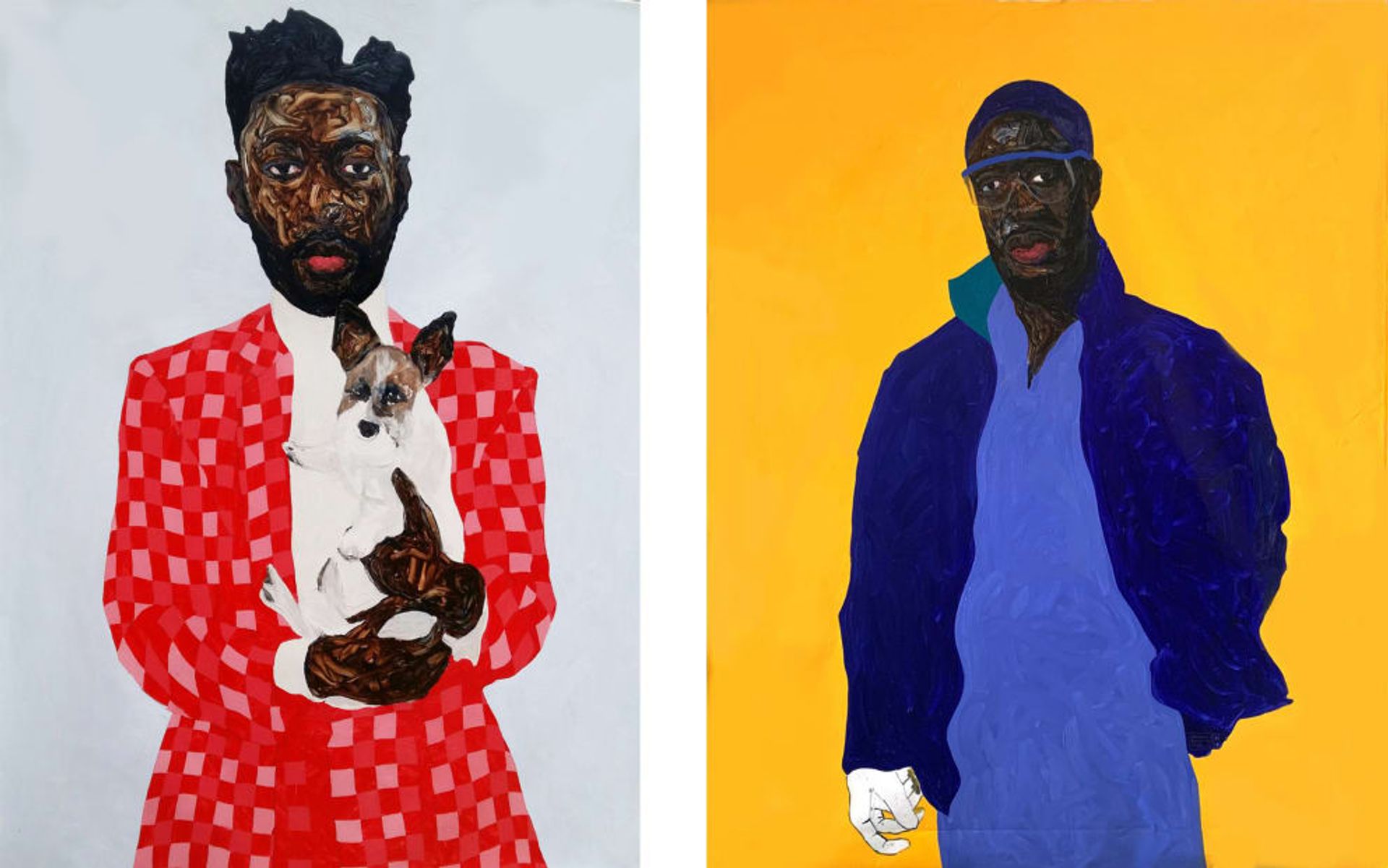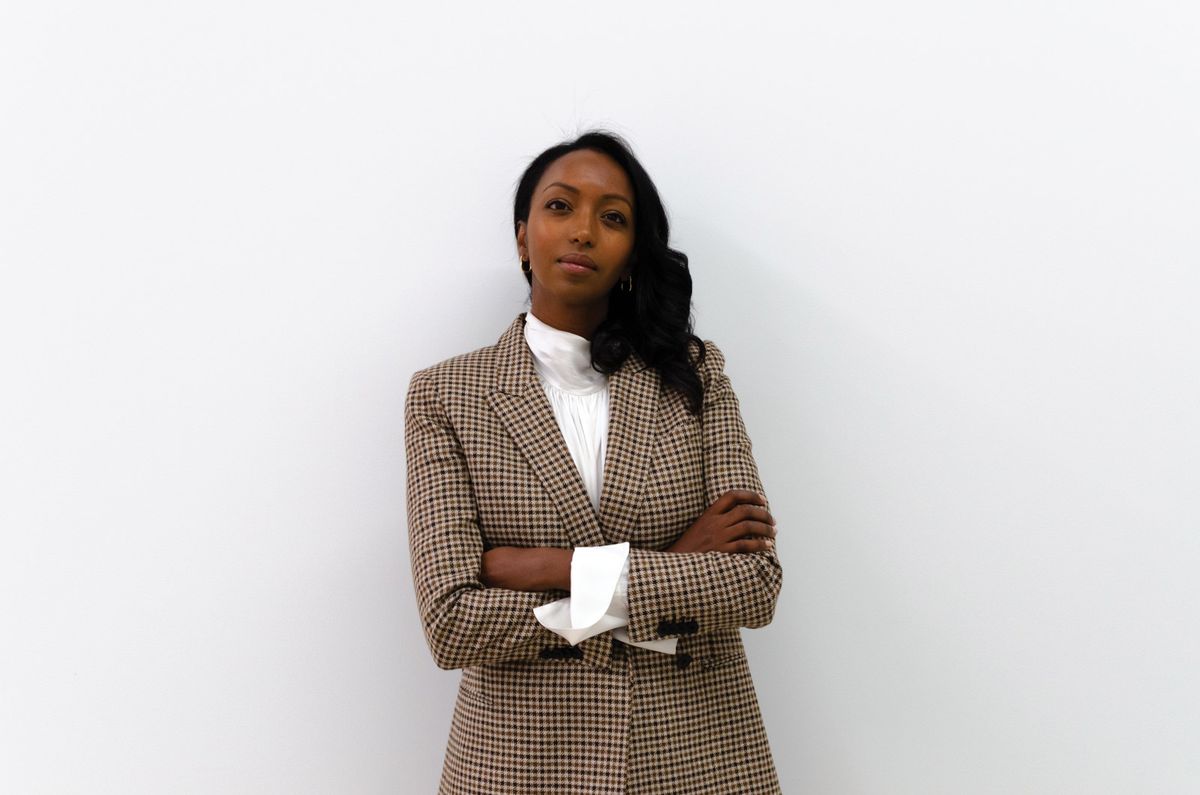“We can go back and forth,” Mariane Ibrahim suggests as we decide whether to chat in English or French. We meet at Paris Photo, where the now Chicago-based dealer is exhibiting self-portraits by Ayana V. Jackson, but Ibrahim says becoming an art dealer was never part of the plan.
Born in Nouméa, the capital of New Caledonia in the South Pacific, Ibrahim studied communications and advertising in London and her “dream was to work for the BBC, figure out what the viewers wanted to watch”. She interned in Canada at Cossette, the agency behind the McDonald’s slogan “C’est ça que j’m”—the Québec equivalent of “I’m lovin’ it”—before working in marketing in the UK.
But a trip to Paris in the early 2000s triggered her move into art—ironic, perhaps, as she now considers the French market to be slightly “behind”—when she stumbled upon a photograph of a black man holding a flower by the Malian photographer Seydou Keïta. It sparked Ibrahim’s interest in contemporary African art, for which she has since become known as a champion, and she still regrets not buying it: “Everyone kept telling me I was looking in the wrong direction. Which, as a marketing agent, was music to my ears.”
From Somalia to Seattle
The discovery inspired a trip to Africa, where she played a role in getting Unesco recognition for the cave paintings of Laas Geel in Somalia. On her return to France, she married Pierre Lenhardt, who now helps run her gallery. Together they started collecting, first concentrating on photography. “Now my taste is evolving towards paintings,” she says. I ask her who is on her radar, but she declines to say; while she is more than happy to put artists’ names forward as a gallery owner, “as a rather competitive collector I’d rather not share my preferences”, she says.
In 2010, “inspired by what was going on [in the US] under the Obama Administration” the couple moved to Seattle—not Ibrahim’s first choice of city but, she says now, “the perfect city to get started. Nothing was happening there.”
She opened M. I. A. Gallery in 2012 with an exhibition of the Malian artist Malick Sidibé photographs to great acclaim, but local interest dwindled fast: “Twelve is my favourite number but 2012 was not a good year,” she says. It took another trip to Paris, on the occasion of Black Portraiture[s]—a conference about the representation of the black body in the West—to crystallise her vision “to focus exclusively on young and emerging artists from the African diaspora”.
Whereas many dealers bemoan the relentless schedule of fairs, Ibrahim saw them as an opportunity to get her burgeoning roster of artists seen globally. She started with the first edition of 1-54 Contemporary African Art Fair in London in 2013, which led to Basel’s Volta, where she brought a 5m-long painting knowing she would not be able to sell it. “I just wanted people’s attention,” she says.
It worked. She quickly built a roster of emerging artists who have since become recognisable on the fair circuit the world over, such as Clotilde Jimenez, Lina Iris Viktor and Zohra Opoku, a presentation of whose work netted Ibrahim the New York Armory Show’s first ever Presents prize in 2017. It was around then that her friend Tony Karman, the director of Expo Chicago, convinced her to move to the Windy City if she wanted to continue growing.
“Chicago has the three things I always look for in a city: good food, art and breath taking architecture,” she says. “It is walkable, unlike Los Angeles, and New York was too obvious. Mexico City also fitted the bill but there is a strong sense of community in Chicago I could not ignore.” Ibrahim enjoys the proximity of like-minded dealers such as Rhona Hoffman and her next-door neighbour Monique Meloche, with whom she is already preparing shows. “I am amazed at how welcoming people have been.”
The Obama spirit is still alive in Chicago—it is, after all, where the former First Family calls home. Fittingly, the day Ibrahim got the keys to her new space, Lori Lightfoot, Chicago’s first black female mayor, was elected—a milestone sadly not reached sooner in one of the most liberal cities in the US. As a dealer dedicated to raising the diversity quotient of the art trade, Ibrahim finds Chicago’s modest yet progressive collector base a good fit.

(Left) Amoako Boafo, Hudson Burke and Benedita Furacao, 2018. (Right) Amoako Boafo, Steve Mekoudja, 2019. Courtesy of Mariane Ibrahim Gallery, Chicago.
A year of firsts
Ibrahim’s new Chicago outpost will not see her schedule slowing down. The yellow-painted stand she will devote to Amoako Boafo at her debut Art Basel in Miami Beach this month concludes a cycle of solo events, paving the way for a series of group shows, one of which will be of Afro-Brazilian artists with an outside curator for the first time.
This has been a year of firsts for the gallery, with debut participations at Fiac and Paris Photo, and in March she will take part in her first Arco Madrid. Next year is “all planned out”, which, Ibrahim says, “gives me the opportunity to broaden my horizons”—she wants to travel, to go to Japan, but also “spice things up more”, set the cat among the art world pigeons. As Ibrahim says, “I like the idea of being everywhere and nowhere.”
Biography
• Born in Nouméa, the capital of the French territory of New Caledonia, South Pacific
• Studied in UK and Canada
• Moved to Paris to begin a career in marketing and advertising
• Founded M. I. A. Gallery in Seattle in 2012
• Moved to Chicago in September 2019


